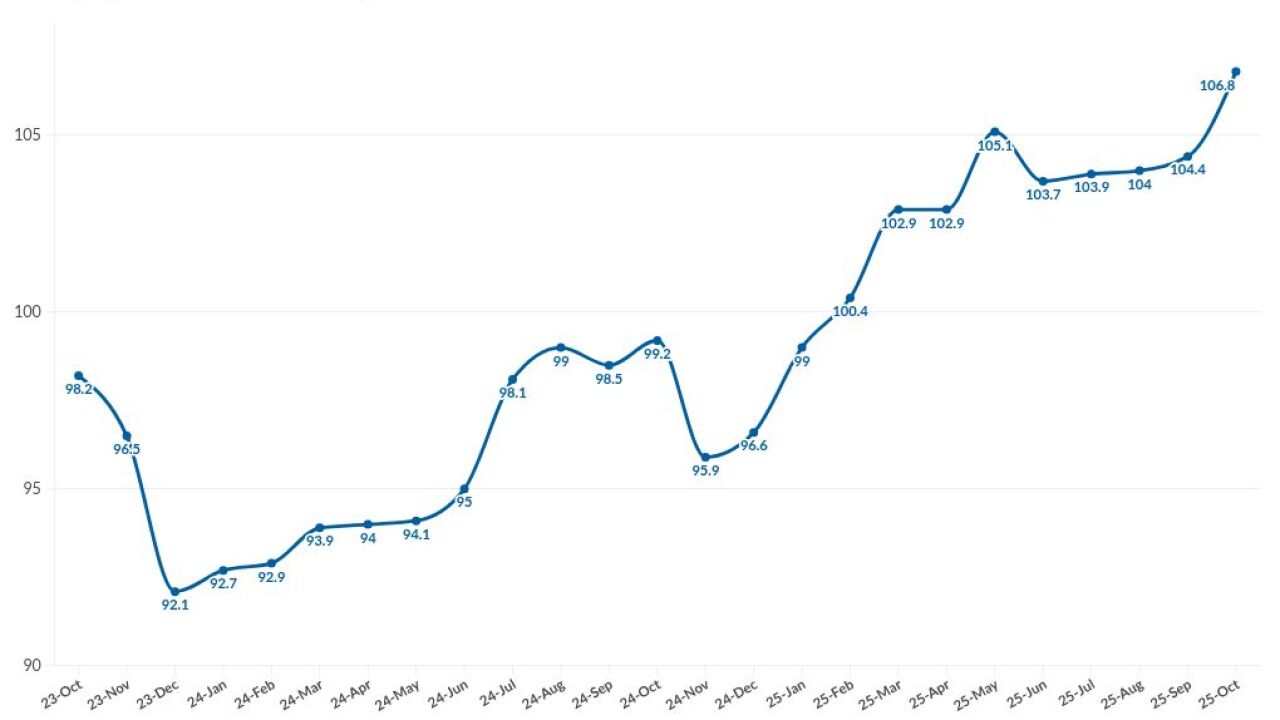
The Federal Reserve's top regulator said changes are needed to the supplementary leverage ratio to improve the Treasury market and ensure banks face proper risk incentives.
In a Monday speech, Fed Vice Chair for Supervision
"Leverage ratio impacts on bank-affiliated broker-dealers can have broader impacts, including market impacts like those observed in Treasury market intermediation activities," Bowman said. "Once we've identified 'emerging' unintended consequences — issues that were not contemplated during the development of a regulatory approach — we must consider how to revisit earlier regulatory and policy decisions."
Bowman's remarks, delivered at a research conference in Prague, come just days before the Fed is poised to formally take up the matter of SLR reform. The Fed board of governors will unveil potential changes to the regulatory framework during an open meeting on Wednesday.
Like other regulatory officials, Bowman said the
Bowman said this dynamic has caused bank-affiliated primary dealers in the Treasury market to pull back on intermediation, which has in turn contributed to the dwindling liquidity in that market. She pointed to the 2019 stress in the repurchase agreement, or repo, market, the so-called "dash for cash" in 2020 and even balance sheet pressures that arose this past spring during heightened Treasury market volatility as signs of
Bowman acknowledged that increased debt issuance, saturation and interest rate volatility have also contributed to the issues facing the Treasury market, but added that regulators have an obligation to alleviate any unneeded stress that they can.
"Due to the role of large banks in the intermediation of Treasury markets, there is a direct link between banking regulation and Treasury market liquidity," she said. "Particularly when it comes to the growth of 'safe' assets in the banking system and the increase in leverage-based capital requirements becoming the binding capital constraint on some large banks."
Introduced in 2014, the SLR was intended to be a "backstop" for the regulatory framework, creating a 3% — or 5% for the largest banks — capital ratio behind a more robust, risk-based structure. Under the risk-weighted approach, Treasuries are assigned a zero weight, whereas corporate loans are typically set at close to 100%.
But, as some banks — particularly those with large trading books — load up on low-risk assets, the SLR minimum is increasingly calling for a larger capital requirement than the risk-weighted minimum. Indeed, a handful of large banks are consistently bound by the SLR while a few others are restricted by it periodically.
When the SLR first went into effect, risk-weighted assets accounted for 48% of leverage exposure on the balance sheets of the eight largest, global systemically important banks. That ratio has since come down to 40%, which Bowman said is evidence that the backstop requirement has become the primary capital constraint that large banks have to manage.
"This downward trend results in the SLR increasingly becoming the binding constraint and reflects banks' growing holdings of high-quality liquid assets, most of which carry a risk weight of zero under risk-based capital ratios but have a 100 percent weighting under leverage capital ratios," she said.
Despite this gravitation toward low-risk assets, Bowman warned that a banking system primarily governed by a risk-blind leverage ratio could incentivize excessive risk-taking by banks, since there is no capital premium for riskier exposures and no discount for safer ones.
"A binding leverage capital requirement can create perverse incentives for banks to shift their balance sheets into higher risk assets, since doing so could generate larger returns without requiring additional capital," she said. "This is simply a cause and effect of overly restrictive leverage capital."
Yet, even for banks bound by the SLR, risk-weighed capital standards still apply, meaning an increase in riskier activity could result in still-higher capital requirements.
Bowman said the goal of this week's meeting is to address the current calibration issues with the SLR, noting that the regulators are finally delivering on reform first called for in 2021, after the temporary exemption of Treasuries and reserves from the ratio's calculation amid the COVID-19 pandemic.
"The proposal would solicit public comment on the impacts of this miscalibration, potential fixes, and work to develop an appropriate and effective solution," she said. "This proposal takes a first step toward what I view as a long overdue follow-up to review and reform what have become distorted capital requirements."





